Florida has become home to a ton of invasive species, including iguanas. Florida Wildlife Commission
Florida ranks number one for invasive species in the continental United States with more than 500 species of animals, birds, plants, and fish. Thanks to its subtropical climate, wildlife smuggling, and some poor management practices by residents and visitors, the state is now home to hundreds of non-native flora and fauna. Florida has three dozen international ports of entry, a worldwide reputation for reptile and plant trade, and hundreds of millions of tourists every year. Birds, fish, seeds and animals come and go, legally and illegally, every day in the Sunshine State.
Some of the worst invasive species in Florida are easily known. Feral pigs are found throughout the state, from the Everglades in the south to Panhandle palmetto swamps and forests. Lionfish and Burmese pythons have spread wildly, impacting other species so dramatically that hunting contests for the invasives are now celebrated each year. The University of Florida says it takes about $30 million a year to manage invasive species in Florida. It also says while just 4 percent of plant species in Florida are considered invasive, those comprise more than a third of the state’s biomass.
What Is an Invasive Species?
According to the U.S. Department of Agriculture, an invasive species must meet two criteria. First it must be non-native to the ecosystem under consideration, meaning it does not occur there naturally. Second, the species must “cause or [be] likely to cause economic or environmental harm or harm to human health.”
Some species may be non-native without causing problems. The USDA says this isn’t the same as a species being invasive. Tomatoes and peppers originated in South America but don’t cause issues for North American ecosystems.
For an example of a true invasive species, look no further than the Burmese python in Florida’s southern Everglades. One of several constrictors known to exist in the ‘glades, the python has decimated native species including rabbits, raccoons, opossums, and birds. Pythons also have been known to eat deer and alligators. The largest python captured measured more than 19 feet long.
Invasive species may be spread by humans, intentionally or unintentionally. Many states have regulations or laws about trapping and releasing feral swine, for example, in order to help reduce the spread. An example of unintentional spread is the introduction of fire ants in Mobile, Alabama, about 100 years ago. It’s believed the ants were among the dirt used for ballast, which was discarded in port, from ships from South America. Of course, there are now fire ants in Florida.
Worst Invasive Species in Florida
For this list I decided to stick with invasive wildlife. Invasive plants and fish deserve their own lists. I picked critters that have a clear negative impact on the state’s native flora and fauna. This could be because they are outcompeting resident wildlife (or preying upon them), or because they are wreaking havoc on habitat.
Feral Pigs
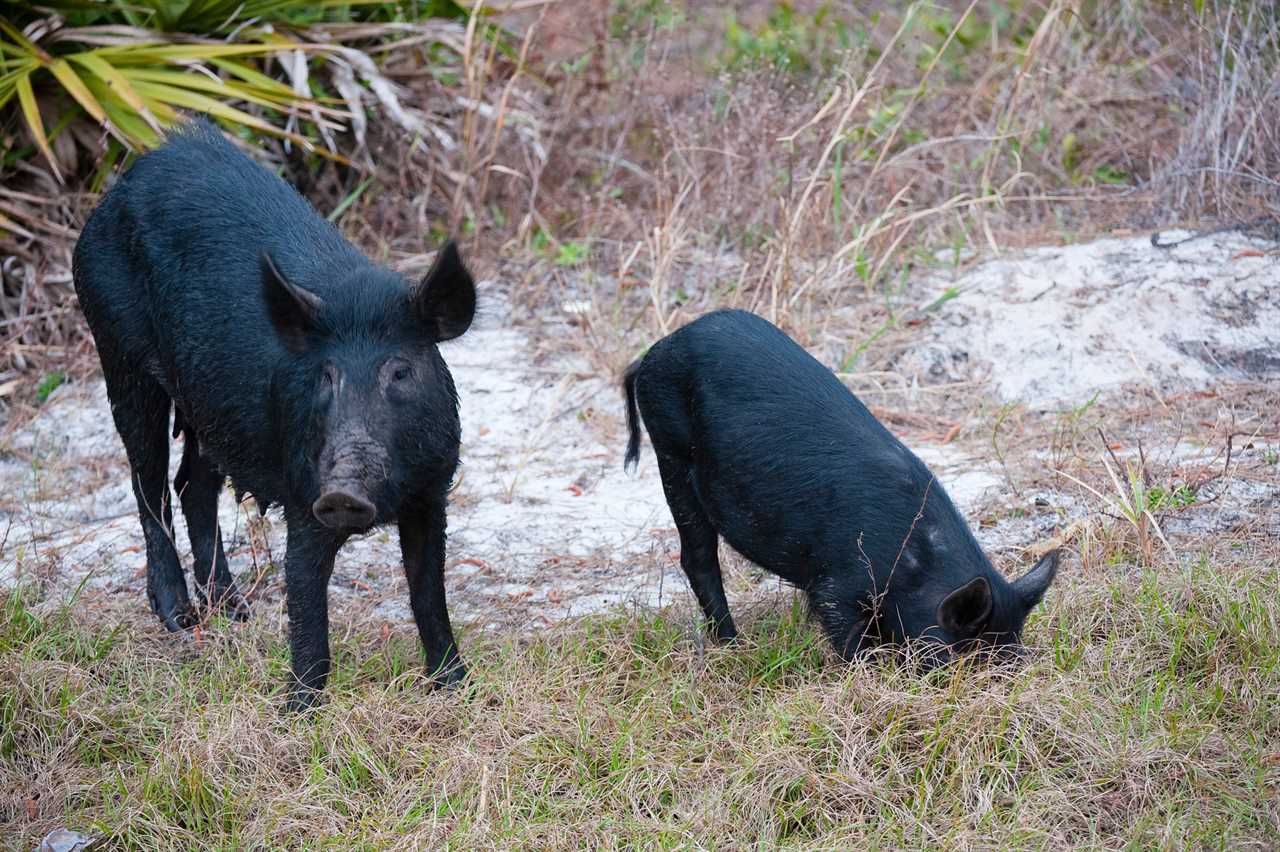
There are an estimated half-million feral pigs in Florida. Michael Leggero, Getty Images
Feral pigs have thrived in the South for so long it’s easy to sometimes forget they’re an invasive species. They were introduced by Spanish explorer Hernando DeSoto when he landed somewhere along the central Florida coast near present-day Sarasota in 1560 or so. Swine were among his ship’s cargo. Once camp was established, it’s no surprise that some of the swine escaped or possibly were let go. Either way, DeSoto is credited with the introduction in Florida, and possibly into Alabama, Mississippi, and other Southeast states he explored. Feral swine in Florida are a major issue.
There are an estimated half million feral pigs in Florida (they can be found in every county). They notoriously root up massive areas looking for food. This destabilizes the soil, weakens native vegetation, damages lawns, and causes erosion. Feral pigs’ wallowing behavior destroys small ponds and stream banks, which may affect water quality. Unfortunately, they also prey upon ground-nesting wildlife, like quail and even sea turtles, according to the University of Florida.
Read Next: Best Guns for Hog Hunting
Feral swine are almost impossible to eliminate because they reproduce two or three times a year and have few predators other than humans. In Florida, they’re seen on golf courses, in yards, and even marauding Disney World.
Burmese Python

Pythons pose a massive ecological problem in the Everglades. Florida Wildlife Commission
Pythons are one of three breeding populations of constrictors established in Florida, the other two being the Northern African and Reticulated pythons. The latter two are believed to have small enough populations that extermination is possible. The Burmese python, however, is well established and is believed to have gained a stronger foothold after Hurricane Andrew hit in 1992. The largest python captured was 19 feet long. One female being studied in the wild laid a record 96 eggs in a clutch. Researchers said 83 of those eggs hatched, illustrating how the pythons continue to maintain dominance in the Everglades and South Florida.
These snakes have devastated small game populations including rabbits, raccoons, opossums and others, and they’ve been known to eat small deer and alligators. They’re primarily nocturnal and have few predators besides humans (though there has been evidence of bobcats preying on python nests). Within the watery wilds of the Everglades, it seems like pythons will continue to thrive, despite our best efforts to eradicate them.
Cuban Tree Frog
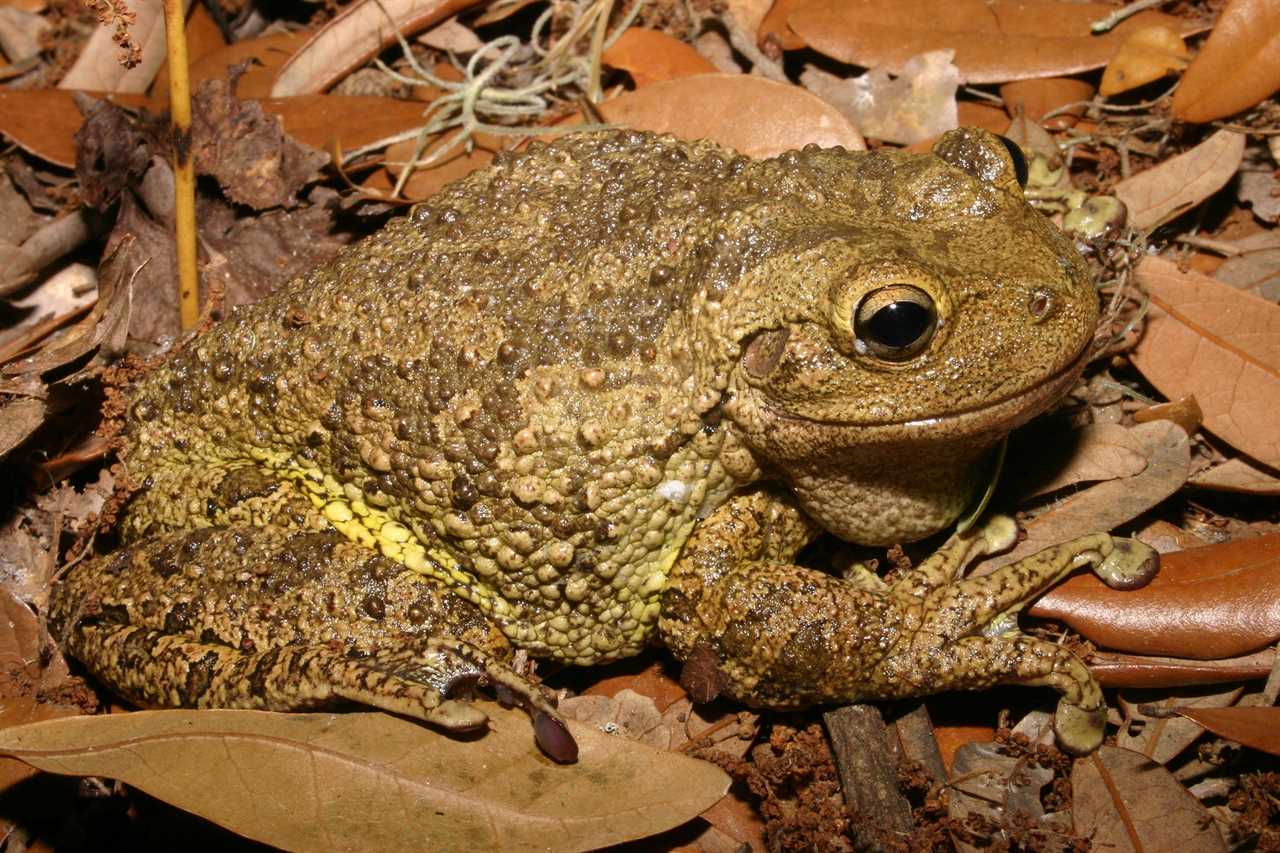
Cuban tree frogs grow larger than native species. Florida Wildlife Commission
Who doesn’t love a big-eyed frog with funny toes? Floridians don’t when it’s the Cuban tree frog. This frog is believed to have hitchhiked from the Caribbean about 100 years ago in ships’ cargo. While similar to native frogs in Florida, the Cuban tree frog is larger and may have different colorations. They can grow to almost 6 inches in length. They eat native frogs, along with lizards and small invertebrates. Once grown, they may be found inside houses near water sources such as sinks, shower drains, toilets, and fountains. A frog in a drain? No big deal. Enough big frogs to clog it? That’s a problem. Because of their impact on native frogs and other critters, the Cuban tree frog leaps onto the list of Florida’s worst invasive species.
Green Iguana
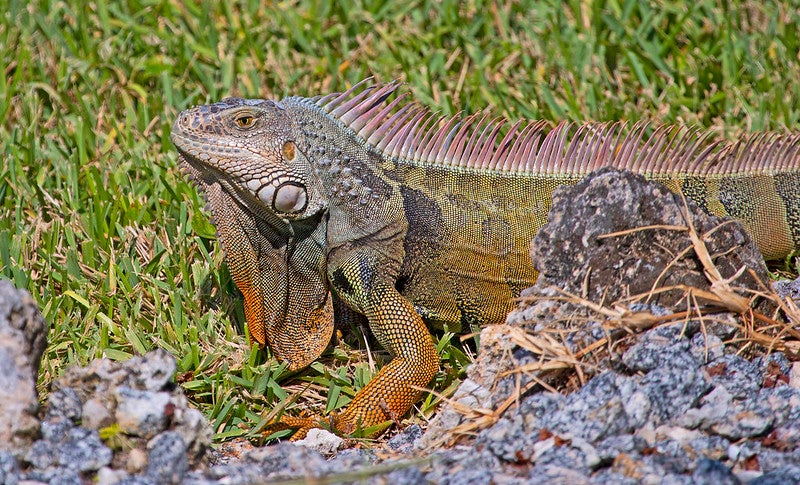
Iguanas thrive in Florida’s subtropical climate. Florida Wildlife Commission
Resplendent in scaly beauty with vivid colors and rows of protective spines, the green iguana is one of several big lizards in Florida. The Nile monitor and tegu (see below) are the other common large lizards in the Sunshine State. Found mostly in southern Florida, iguanas stick to rocky areas like seawalls and protective riprap barriers. Yet the availability of food sources, ample habitat and “Aw, they’re cool so don’t bother them” attitudes by many along the Gold Coast have helped the population grow. Iguanas dig burrows under the foundations of homes, buildings, seawalls, canal banks, dams, and pretty much everywhere else. They’re imports from South America and Central America as part of this country’s large reptile trade. Once in the wild, though, they can wreak havoc on native vegetation and fruits. Iguanas can be hunted year-round in Florida.
Giant African Snail
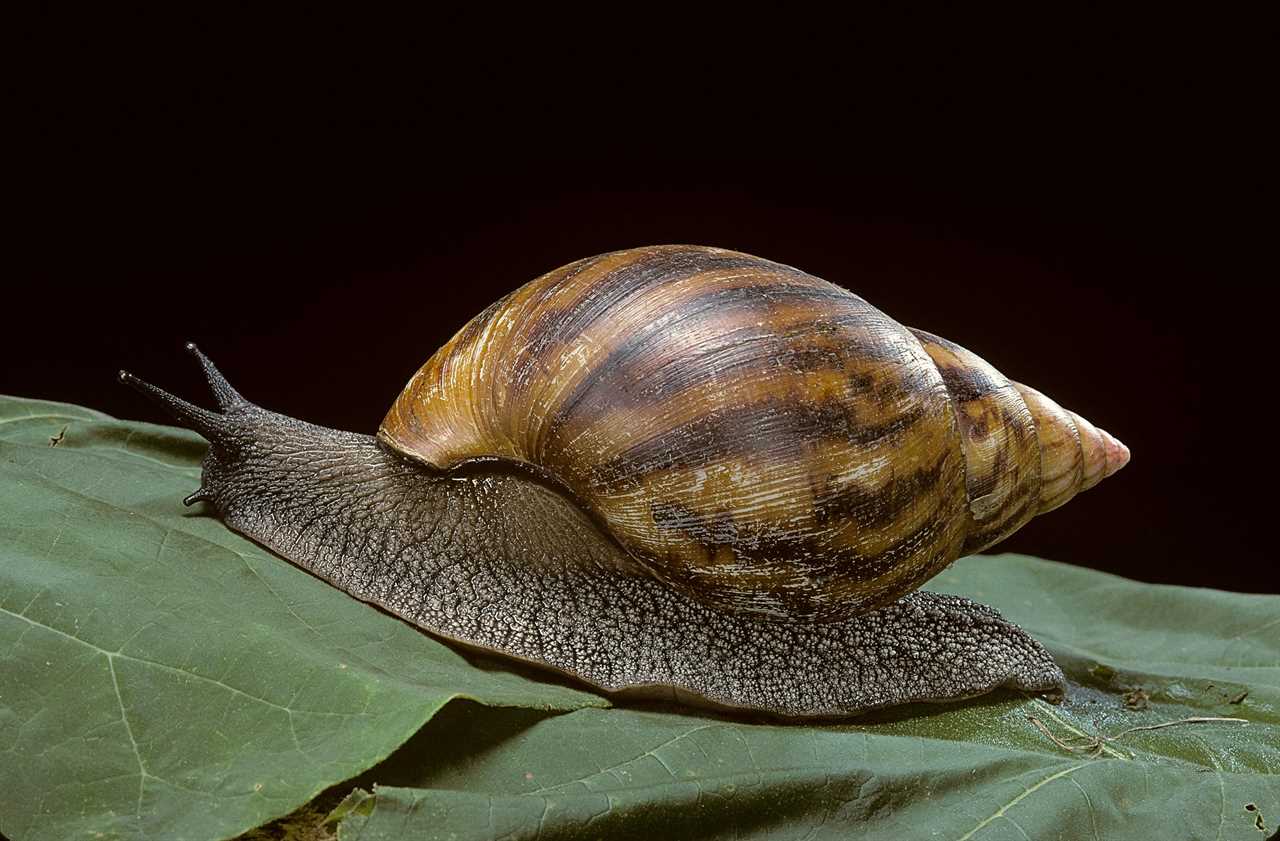
Giant African snails keep coming back in Florida. Paul Starosta, Getty Images
This snail just won’t die. In Florida it was first discovered in the 1960s. Wildlife officials spent more than $1 million over 10 years to eradicate it. At first wildlife managers thought they were successful. But then the giant African snail returned in Broward and Miami-Dade counties in 2011 thanks. Ten more years and more money resulted in extermination. Hurray! And yet a third reintroduction, in Pasco County on the west side of the state north of Tampa, has put officials on the grind again. The giant snails, which can grow to 8 inches long with a 5-inch diameter shell, indiscriminately eat at least 500 different types of plants. They can lay clutches of eggs every 2 to 3 months, and about 1,500 eggs a year. The snails cause damage to plaster, stucco, and other materials on homes and structures. Giant African snails also may carry and transmit a parasitic nematode that causes meningitis in humans. Among the plants it devours are vegetables, fruits and, in the absence of those, ornamental shrubs around homes or buildings.
Tegu Lizards

Tegu are one of several large lizard species that have been introduced in Florida. Florida Wildlife Commission
The most chill Florida lizard species might be the tegu. Brought in from South America, three species have been found in South Florida. The black-and-white Argentine tegu are known to breed in Miami-Dade and Hillsboro counties, primarily in Florida City. Gold tegus are breeding and spreading in Miami-Dade, and the red tegu is known in the region but is not believed to be breeding. The Argentine species has moved north, with sightings in Georgia, South Carolina, and south Alabama. The tegu can grow to about 4 feet long and weigh 10 pounds or more. Tegus usually are found along roads, in disturbed areas. They eat almost anything, including small animals, birds, fruit, vegetables, and eggs. Ground-nesting birds such as turkeys, quail, and some songbirds are at risk of tegu predation. With tegus, iguana, and several species of semi-aquatic monitors, Florida is under a big-lizard invasion.
Rhesus Monkey
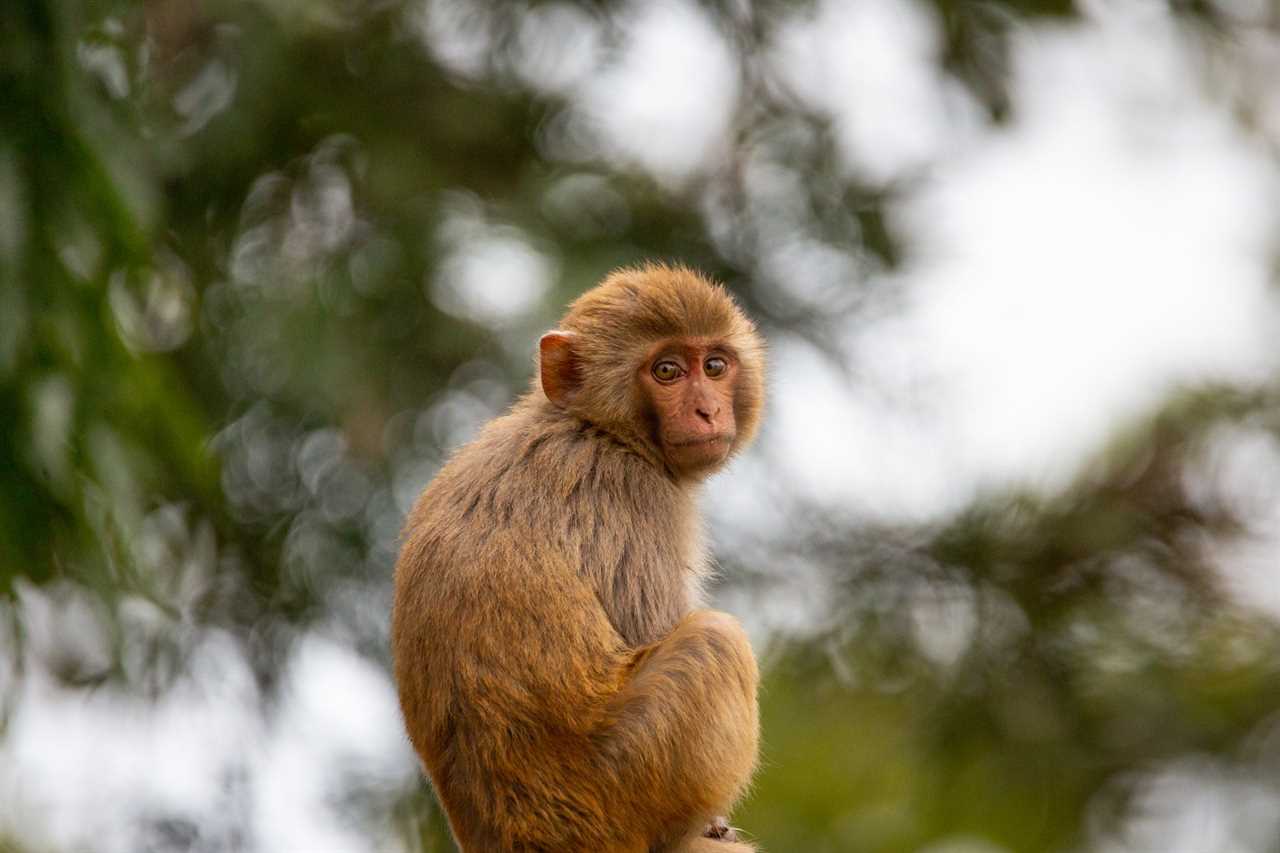
Rhesus monkeys can spread herpes. Karthikeyan Chinnathamby, Getty Images
Not surprisingly, Florida has several species of monkeys that were introduced intentionally and accidentally. The rhesus monkey is believed to be a mix; some were escapees, some released by tired owners, and some introduced when Hurricane Andrew hit in 1992 and damaged research facilities where the monkeys lived. They’re native to southeast Asia, are strong swimmers, adaptable in the subtropical habitat similar to their homeland, and have been living in Florida for more than 80 years. About 600 rhesus macaques are believed to live in Florida. Wildlife officials have caught more than 1,000 in the last 10 years. Officials say most of the captured monkeys had herpes B virus, which could be transmitted to humans and thus is a public health hazard.
Cane Toad
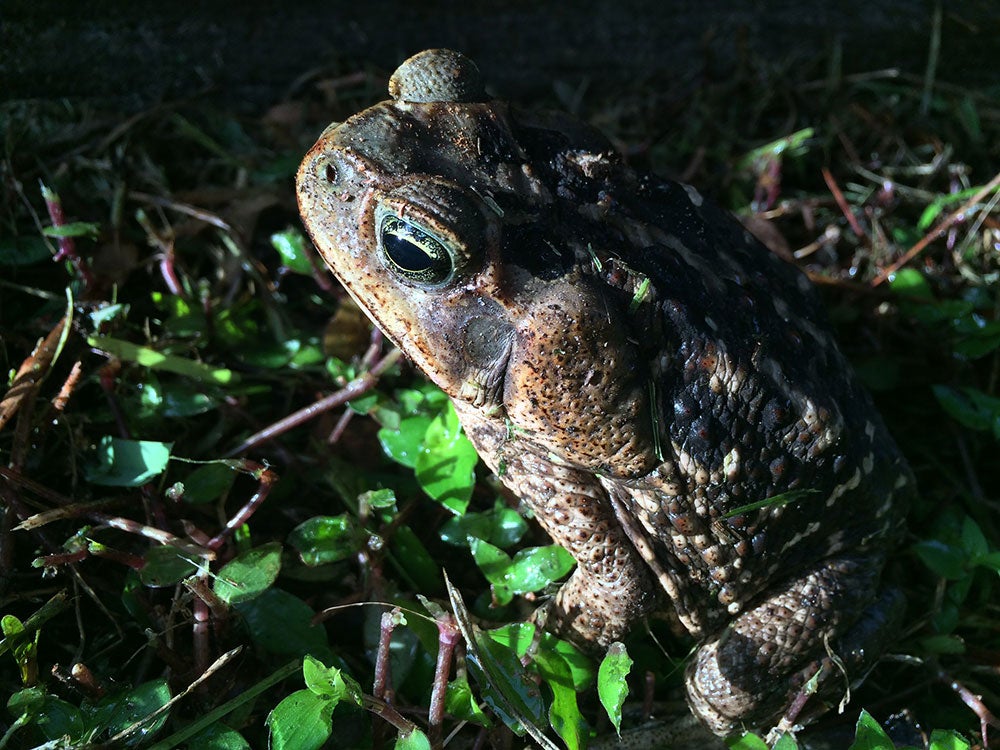
Cane toads can grow to 9 inches long. Florida Wildlife Commission
Perhaps the cane toad could have a death match showdown with the Cuban tree frog? That would be interesting, since these two invasive species wreak havoc while outcompeting native species. The cane toad is native to Central and South America, and grows to a max of 9 inches in size. Wildlife officials say Florida’s native toads typically grow to 4 inches or less.
These nasty invasive amphibians eat just about anything they can fit in their mouth: insects, small invertebrates, grubs, tiny birds, lizards, snakes, or whatever else they catch and don’t spit back out. Also, the Cane Toad emits a toxin that irritates skin and eyes. This toxin can kill pets that bite the toad. Cane toads are found primarily in the central and southern part of the state. Officials are on the lookout for a northward migration.
Feral Cats
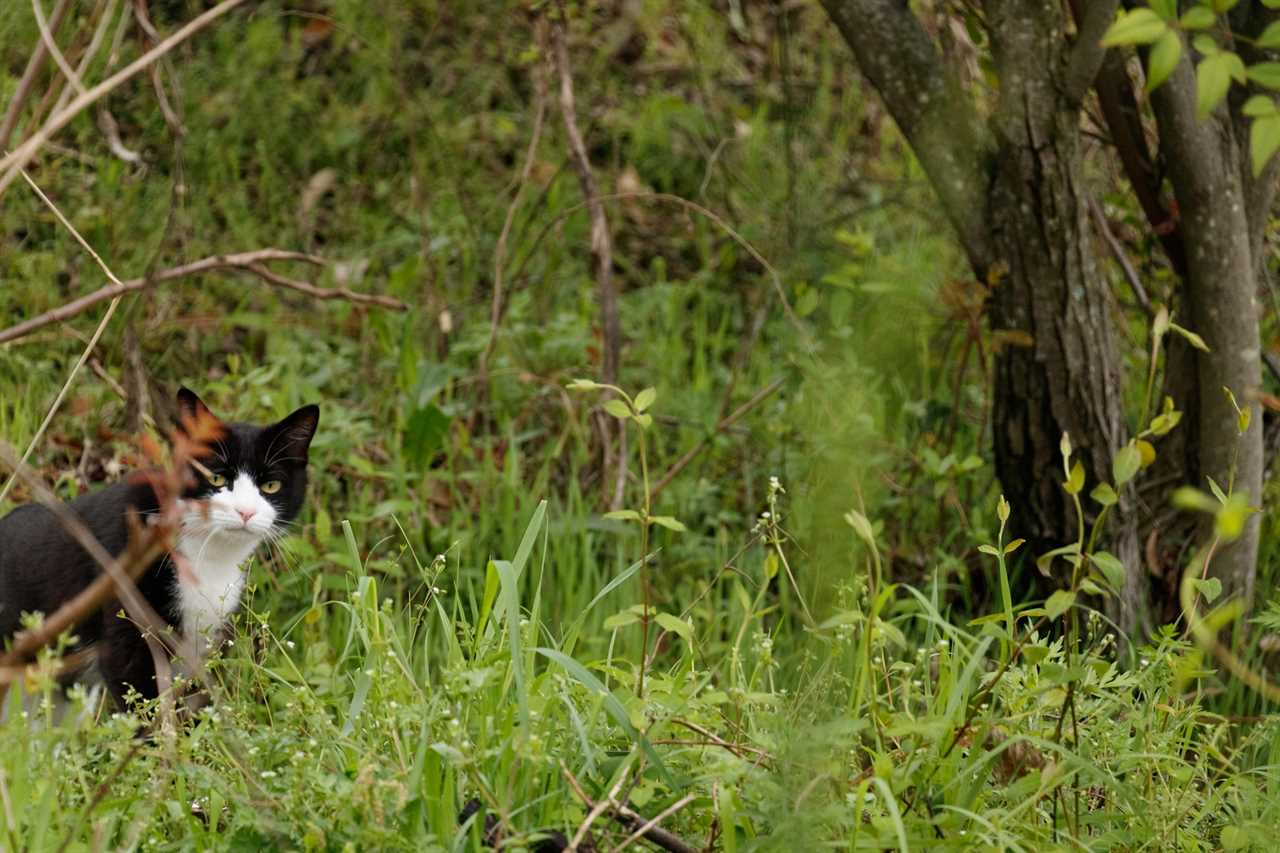
Feral cats wreck havoc on ground-nesting birds. Yuko Yamada, Getty Images
A scourge across the country, feral cats are one of the introduced invasive species that most people don’t consider. A cat? What damage could Whiskers do? Feral cats are not the tame house cats you’re used to. If they’ve been in the wilderness while reproducing, they’re quite adept at remaining alive, hiding, foraging, hunting and surviving. Feral cats will eat rodents, small animals, and birds. The latter is one of the biggest concerns, especially with native populations of songbirds. Feral cats are adept climbers and stalkers, with the ability to climb trees and ravage nests or wait for a shot at an unassuming bird. It’s estimated that cats kill 1.3 billion to 4 billion birds each year in the U.S., with 69 percent of these kills attributable to feral cats, according to allaboutbirds.org.
Feral cats also can carry and transmit diseases. Despite the animal rights crowd’s passion to spay-neuter and release feral cats, they’re one invasive that should be on the hit list everywhere.
Armadillo
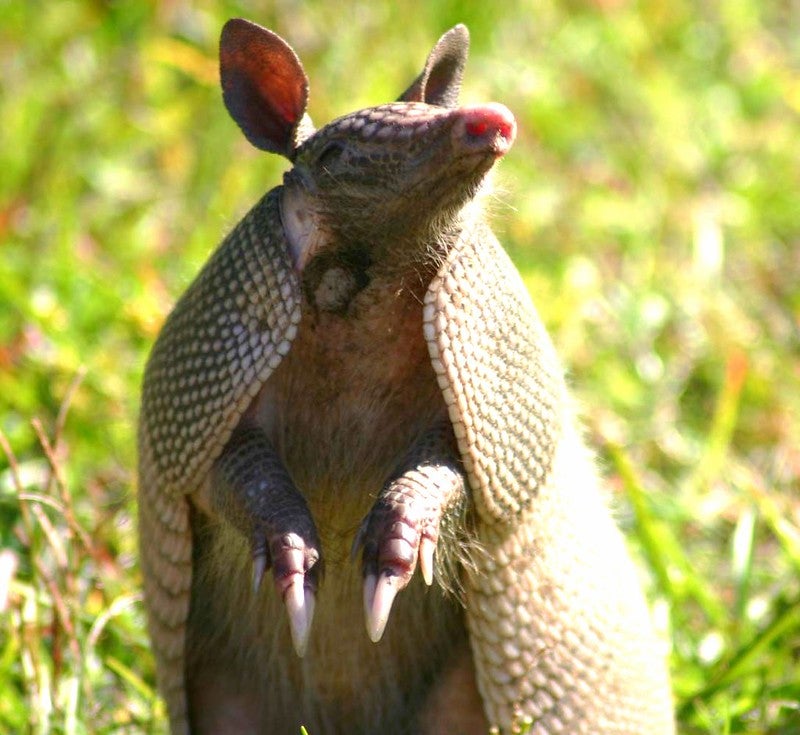
Armadillos are spreading across the U.S. Florida Wildlife Commission
The armadillo was brought to the state in the 19th century from South America. The nine-banded armadillo reproduces prolifically, has no serious predators, and is mostly nocturnal. Coyotes, hogs, and bobcats will eat them, but for the most part armadillos have it pretty easy. They dig holes, which is problematic for farmers and ranchers. Armadillos also transmit diseases. Leprosy is most closely associated with armadillos, but the Centers for Disease Control and Prevention say the risk is low. Still, they’re not cuddly. Armadillos have sharp claws and a wicked sense of smell, which helps them feed on invertebrates, grubs, ants, and termites. Weirdly enough, the nine-banded armadillo can inflate its intestines to float in water or hold its breath and scoot across the bottom of a small waterway. They’re found throughout the state and are spreading across America.
Invasive Fish Species in Florida
There are too many invasive and non-native fish species in Florida to list here, but here’s the top of the roster:
- Red Lionfish
- Asian Grass Carp
- Blue Tilapia
- African Jewelfish
- Oscar Fish
- Walking Catfish
- Asian Swamp Eel
- Pike Killfish
- Clown Featherback
- Snakehead
- Clown Knife Fish
- Mayan Cichlid
Invasive Plant Species in Florida
This is just a small snippet of the invasive plant species taking root in Florida
- Rosary Pea
- Foxtail Copper Leaf
- Red Sandalwood
- Tung Oil Tree
- Texas Madeiravine
- Alligator Weed
- Skunkvine
- Brazilian Pepper
- Australian Pine
- Melaleuca Tree
- Water Hyacinth
- Japanese Honeysuckle
- Lantana
- Camphor Tree
Final Thoughts on Invasive Species
There are a lot of cool critters in Florida, both native and non-native. The problem is that any successful non-native species will attempt to muscle out a native species that already fills the same niche. Pythons compete with native alligators as the apex predator of the swamp. Invasive frogs and toads bully the smaller amphibians into decline. The worst invasive species in Florida will likely never be fully eradicated. However, all outdoorsmen and women should do their best to stop their spread and to prevent more introductions.
The post Invasive Species in Florida: The 10 Worst Invaders appeared first on Outdoor Life.
Articles may contain affiliate links which enable us to share in the revenue of any purchases made.
By: Alan Clemons
Title: Invasive Species in Florida: The 10 Worst Invaders
Sourced From: www.outdoorlife.com/conservation/invasive-species-in-florida/
Published Date: Mon, 21 Aug 2023 19:30:59 +0000
----------------------------------------------
 Backyard GrillingWeekend WarriorsAdvice from DadBeard GroomingTV Shows for Guys4x4 Off-Road CarsMens FashionSports NewsAncient Archeology World NewsPrivacy PolicyTerms And Conditions
Backyard GrillingWeekend WarriorsAdvice from DadBeard GroomingTV Shows for Guys4x4 Off-Road CarsMens FashionSports NewsAncient Archeology World NewsPrivacy PolicyTerms And Conditions
